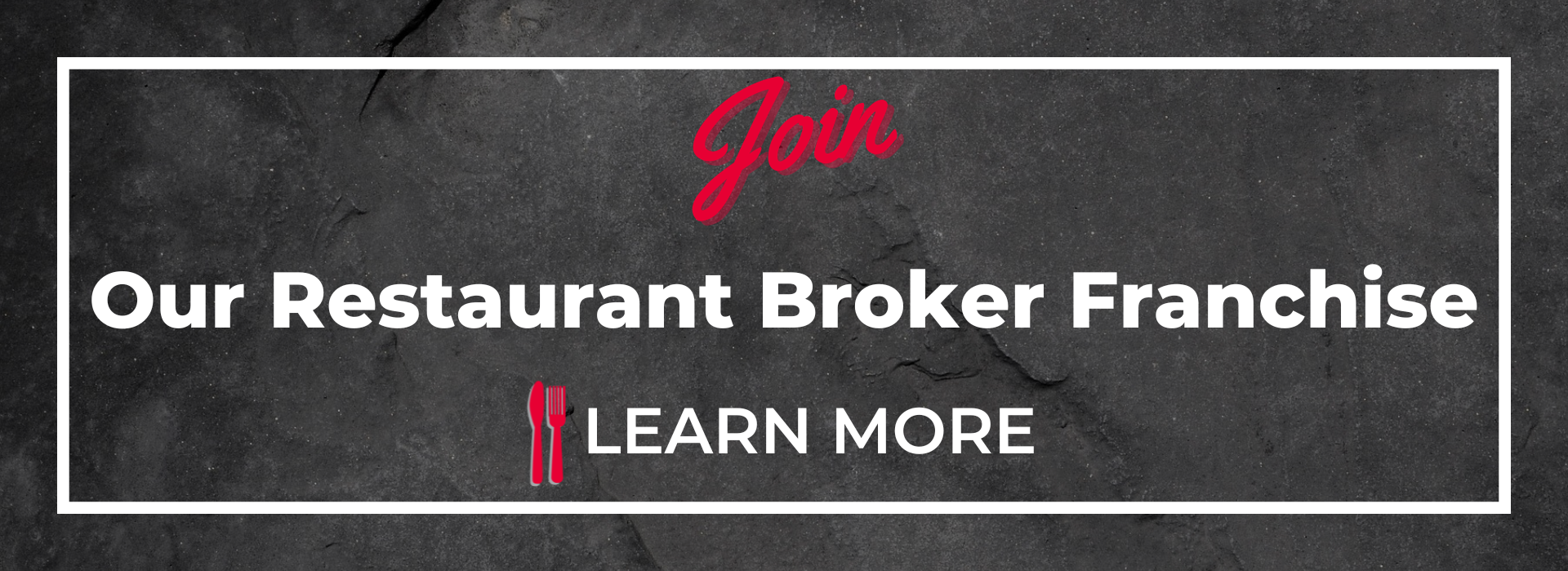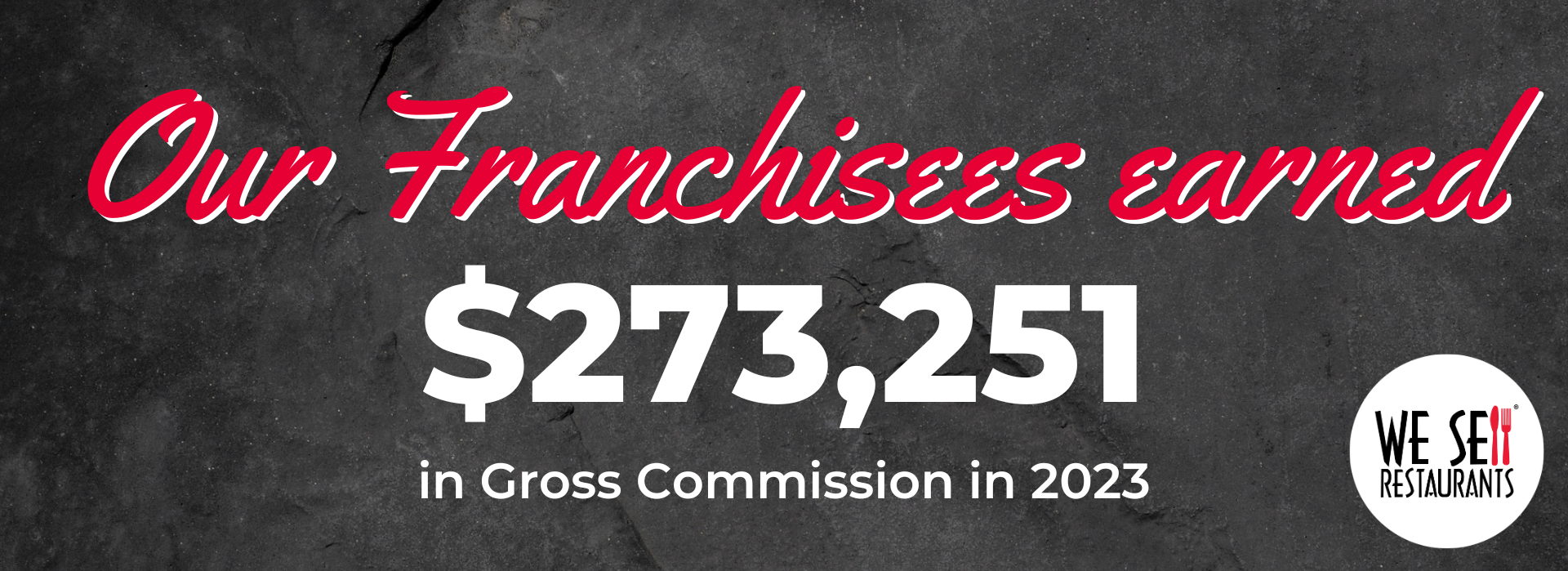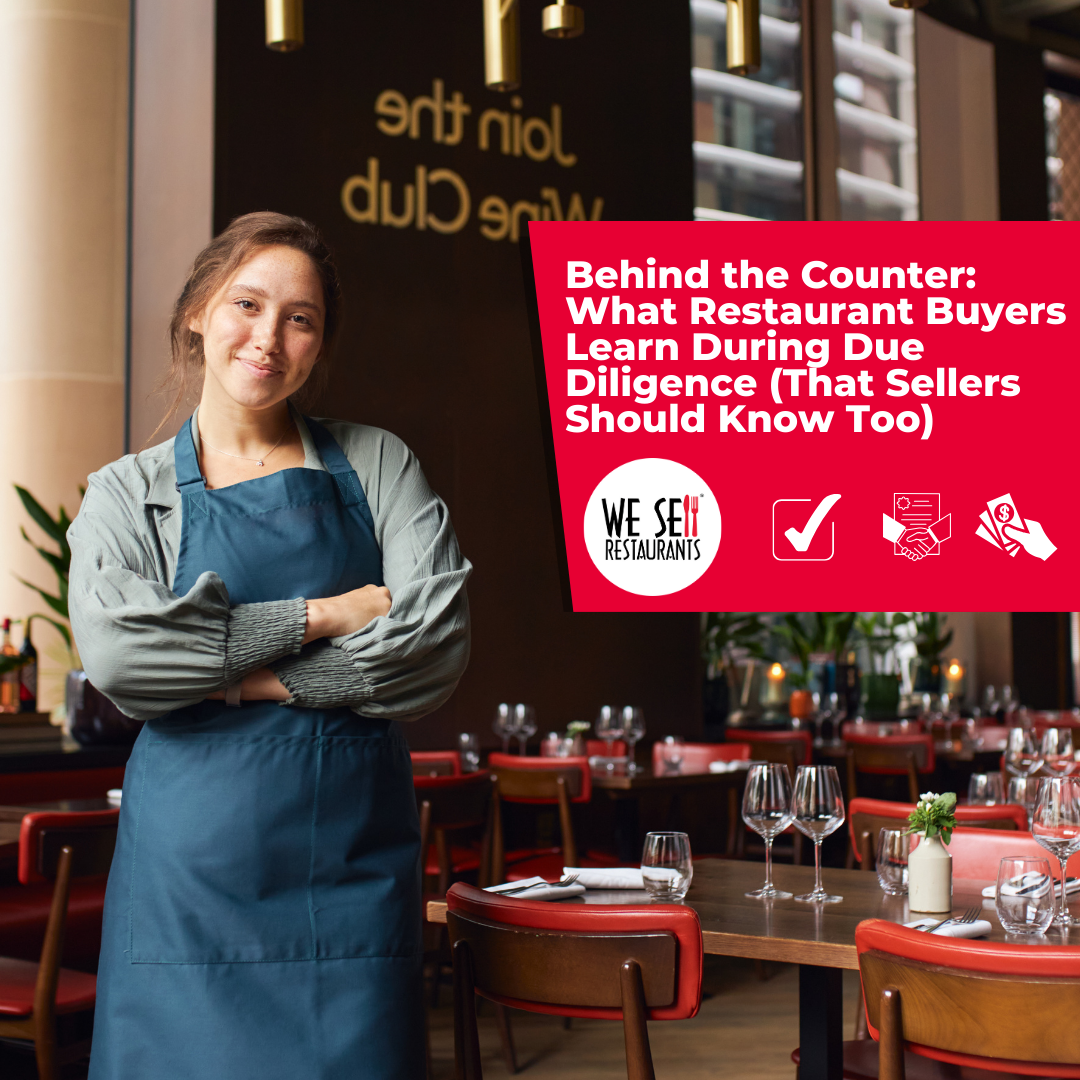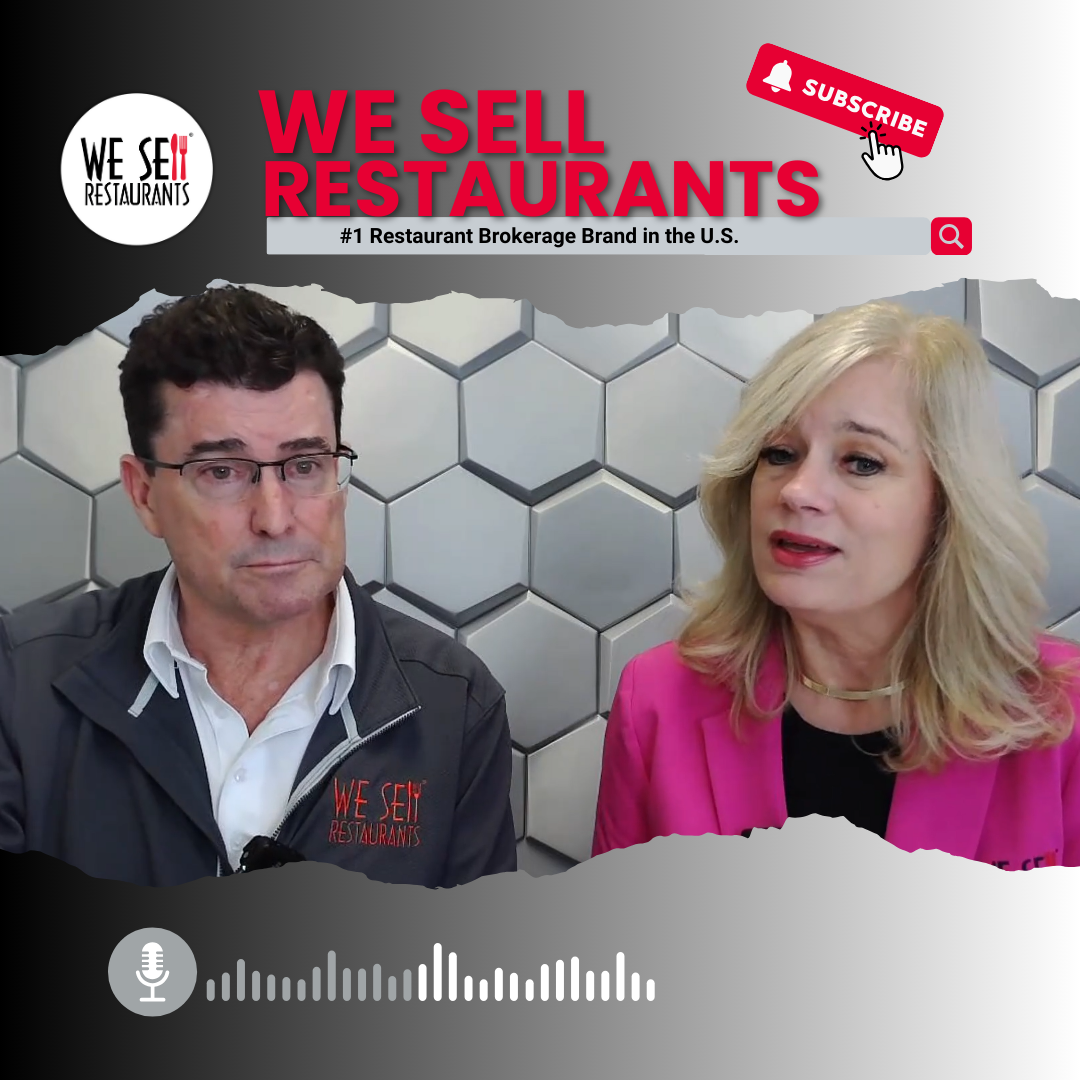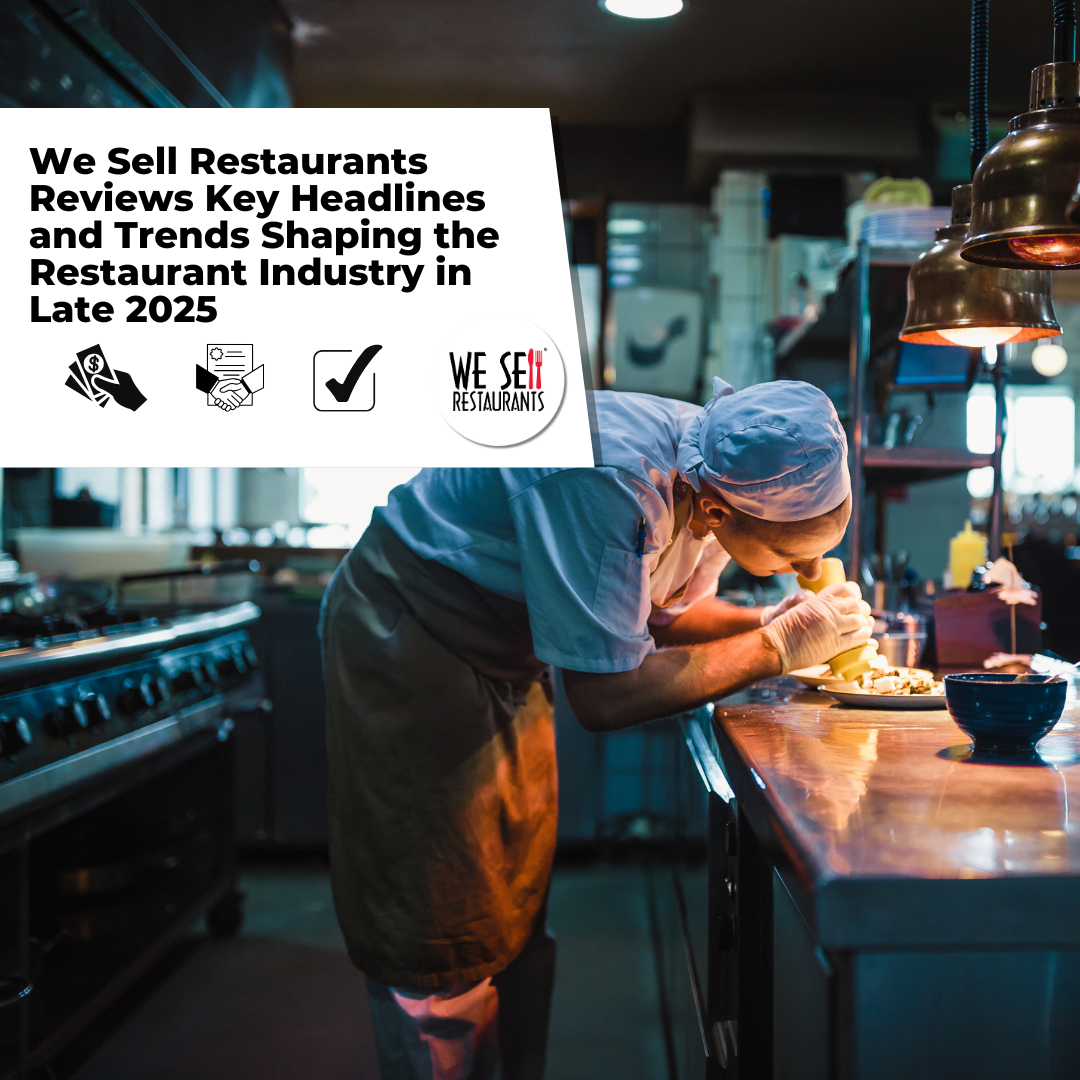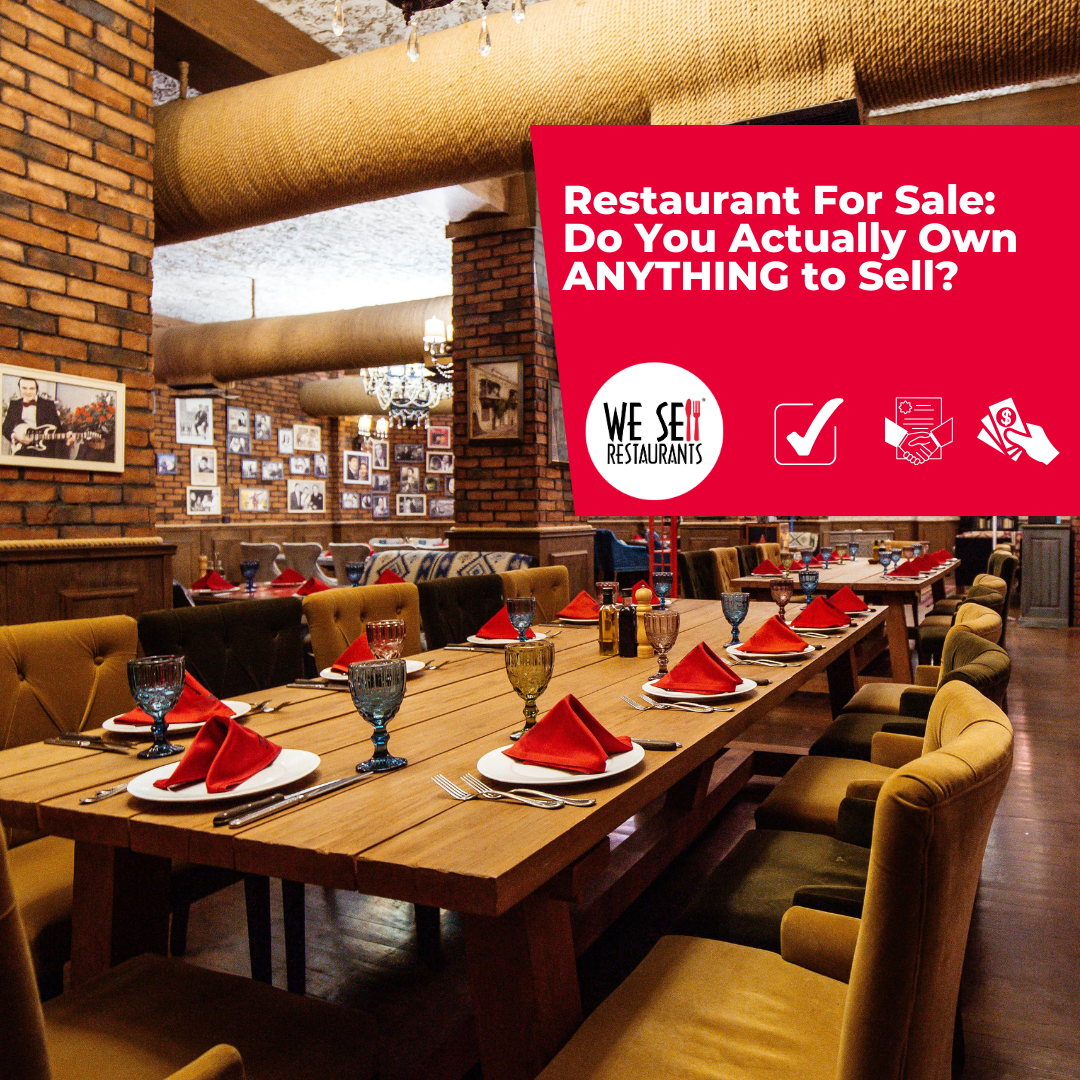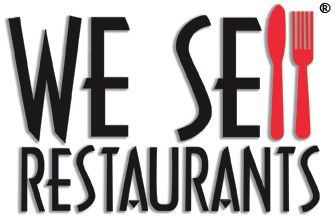For many seeking to sell a restaurant, the primary concern becomes, “What is my Restaurant business worth?” Luckily, there are specific formulas to provide the answer, even for the layperson. An accurate number for the business is critical, particularly if Small Business Administration (SBA) backed lending is involved in a transaction.
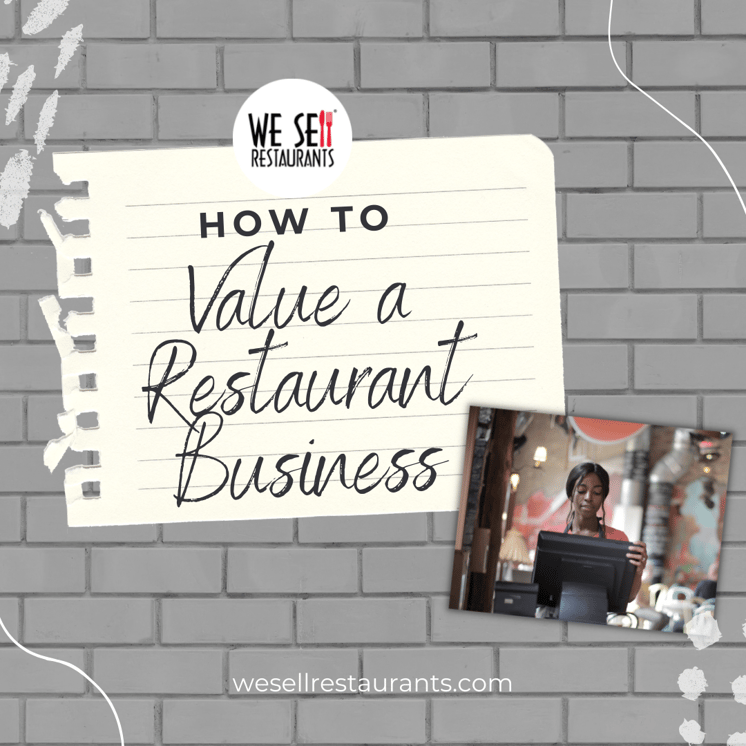
For all SBA loans, a third-party valuation is performed prior to closing. This is like residential lending where an external resource is engaged by the bank to validate the value of the asset being loaned against. In residential loans, it’s referred to as an appraisal and in business loans, it is referred to as the valuation. That is why it is paramount for principals engaged in the process to clearly understand how to value a restaurant business. When the deal goes into contract, an external resource will confirm that number. The bank does not “choose” his or her favorite valuation expert but must pull from a list of approved vendors. That means an independent evaluation is truly possible. It is not influenced by the bank, the Restaurant Broker, the seller, or the buyer.
Why is Knowing How to Value a Restaurant Business so Critical?
The requirement for a valuation prior to closing is critical as the number arrived at by the third party must meet or exceed the selling price on the contract for the deal to fund. In a situation where a seller and buyer agreed on a price in a contract, but the valuation was inaccurate, there are still three ways to keep the deal moving forward.
Scenario 1 – Renegotiate Pricing
The first scenario is that the buyer and seller may renegotiate the contract price. This means the seller, who expected a certain amount of money at closing will be disappointed and may feel backed into having to accept the lower price. That is why it is imperative that the person doing the initial work knows how to value a restaurant business specifically.
Scenario 2 – Buyer Decreases the Bank’s Risk with Additional Funds
A second option when the deal is in contract at too high a price is for the buyer to bring more money to the table as a down payment. This strategy works, as the bank’s risk is covered, but a buyer is, at that point, essentially overpaying for the restaurant business.
Scenario 3 – Seller Decrease the Bank’s Risk with a Seller Note
Another option is that the seller could do a “hold back” where he or she carries a note for a portion of the balance. This means again, the bank has less exposure for the risk associated with the purchase of the restaurant but, the seller does not receive the full value he expected at closing.
However, if the opportunity is overpriced and does not qualify for the loan at the amount in contract, the deal could be terminated under standard language for loan contingencies.
While, overall, it is possible to solve for an issue once you are in contract and the deal is ready to close, it creates a condition where the deal could fail. That’s why it is critical that the Restaurant Broker be familiar with the industry and understand how to value a restaurant business. If not, all the work to write the offer, get the contract, complete the due diligence, and submit paperwork for the loan, could create massive disappointment for both the buyer and restaurant seller.
The Basics of Restaurant Valuation
Now that you know why it is so critical to know how to value a restaurant business, we will review the basic methodology, which is, essentially, business math. The starting point is your financial data. This is in the form of either a profit and loss statement or ideally, tax returns for multiple years. Based on the events of 2020, where most restaurant sellers experienced either full closures or occupancy restrictions, the parameters of how to value a restaurant business changed dramatically. Prior to that time, a Certified Restaurant Broker might look at two years of trending (or three years of records) and ultimately base the listing price on the latest 12 months. What we know now is that lenders and the industry are willing to simply ignore 2020 altogether. That is very important as we just covered how the lending community essentially sets the bar for restaurant valuation.
Knowing how to value a restaurant business means undergoing a thorough review of the profit and loss statement or tax returns. Sellers should work to solve for Discretionary Earnings (DE), Discretionary Sellers Cash Flow (DSCF), Sellers Discretionary Earnings (SDE), or Owner Benefit. All of these refer to the same number, but these terms are used interchangeably in the industry.
Many restaurant owners mistakenly believe that their business is sold as a multiple of EBITDA or earnings before interest, taxes, depreciation, and amortization. That is a myth perpetuated online and in some cases, from accountants who are familiar with bookkeeping and taxes but are less familiar with how to value a restaurant business. It is typically true that multi-unit transactions (5 or more restaurants) are sold on a multiple of EBITDA but it is not the case for most sellers with less than five stores.
That is a very important point as the definition of DE, DSCF, SDE, and Owner Benefit is greater than that of EBITDA in every instance. A restaurant seller who does not know how to value a restaurant business would undervalue his business without a clear understanding of this calculation. Even CPA’s and accountants that have done work with their clients for years mistakenly advise them to rely on their EBITDA for an understanding of what their restaurant is worth. In the example below, you can see the difference in the two approaches and how that influences the overall selling price of the business. Relying on EBITDA alone is not how you value a restaurant business and for most sellers, will leave a significant amount of money on the table.
The definition SDE or Owner Benefit is as follows; EBITDA plus the amount of a single owner operator’s salary, plus any extraordinary or unusual expenses, and plus any expenses that directly benefit the owner. These are commonly referred to as “add-backs” and can be easily understood if you think of them as expenses that go away for the buyer when the seller leaves the business or were one-time or extraordinary items.
The reason that knowledgeable brokers use this formula is, again, related to lending conditions. Loans guaranteed by the SBA are always calculated the same way because the requirements for lending include that the party buying act in the restaurant as an owner-operator unless he or she is buying multiple stores. Even then, they must demonstrate to the lender that they will be actively engaged.
The SBA model for lending minimizes risk to the lender because the U.S. government guarantees to step in and cover up to 80% on any default (though this was adjusted for the COVID crisis for a period of time to cover up to a 90% loan guarantee). Since the SBA-backed model is the most common way to obtain a bank loan on restaurant businesses, how the business operates, and staffing is an important consideration.
Here is an example where a restaurant is evaluated based on EBITDA and common items on the tax return. They include net income of 35,500, interest expense of $15,000, depreciation expense of $12,000 and amortization expense of $1,000 and no taxes. Under the definition of EBITDA, this amount is shown in the table below as $63,500
|
Net Income |
$35,500 |
|
Interest Expense |
$15,000 |
|
Depreciation Expense |
$ 12,000 |
|
Amortization Expense |
$ 1,000 |
|
EBITDA |
$63,500 |
Compare this to Seller’s Discretionary Earnings or SDE (Owner Benefit, SCDF) in the chart below which requires a much deeper dive into the tax return and conversations with the owner. We’ll start with the same numbers in the EBITDA example which are: net income of 35,500, interest expense of $15,000, depreciation expense of $12,000, and amortization expense of $1,000 and no taxes. In this case, however, we review the rest of the tax return to fully understand the true owner benefit. That requires that the Certified Restaurant Broker and Seller meet to review all expense line items. Continuing the example, this is what the Restaurant Broker determines about the balance of the expenses.
- The seller is absentee and while he draws a small salary of $22,000 reflected on the tax return. He also pays a General Manager $40,000 per year and that amount is included in the salary line.
- The seller pays his personal cellphone expense through the business at a rate of $200 per month or an annual expense of $2400.
- The repair and maintenance line on the tax return is $28,000 and that includes a one-time expense of $7000 to replace the coil on the freezer and refrigeration units.
- The auto expense reflected on the tax return is not related to the business and the store does not do any delivery. It is the seller’s auto expense for his personal vehicle and amounts to $4,200 for the year.
Under our definition of SDE, we can now add back or recast the benefit. After all, the definition of SDE is EBITDA plus the amount of a single owner operator’s salary, plus any extraordinary or unusual expenses, and plus any expenses that directly benefit the owner.
As we pull all the numbers into a chart below, we see that the Sellers Discretionary Earnings (SDE) is substantially higher than EBITDA alone as viewed side by side below. The EBITDA is $63,500 while the Seller’s Discretionary Earnings or Owner Benefit is $139,200.
It is important to note that in our example, both the owner’s salary (because he is absentee) and the General Manager’s salary are added back. This ties to our definition as the SBA lender wants to confirm that the new buyer will come in and take over the role, responsibilities, and hours of the person operating the store that day. Since they do not lend on an absentee ownership basis, the new buyer would assume the role of the General Manager and also get the benefit of the $20,000 in salary currently paid to the seller for absentee services. This metric alone can dramatically alter the valuation of the restaurant business and must be fully understood by all parties to the transaction.
|
Valuation Model |
EBITDA |
SDE Owner Benefit) |
|
Net Income |
$35,500 |
$35,500 |
|
Interest Expense |
$15,000 |
$15,000 |
|
Depreciation Expense |
$ 12,000 |
$ 12,000 |
|
Amortization Expense |
$ 1,000 |
$ 1,000 |
|
EBITDA |
$63,500 |
|
|
Seller Earnings (absentee) |
|
$22,000 |
|
GM Earnings (Hands On) |
|
$40,000 |
|
Cellphone Expense |
|
$ 2,400 |
|
Repair and Maintenance |
|
$ 7,000 |
|
Seller Personal Auto |
|
$ 4,200 |
|
SDE, SDCF, Owner Benefit |
|
$139,200 |
Understanding how to value a restaurant business must include complete knowledge of items which an SBA lender, under normal circumstances would add back to arrive at SDE. In the example above, all items would be accepted and rolled into the valuation required by the bank. An expert Certified Restaurant Broker will be knowledgeable on this process.
How to Value a Restaurant Business Using the “Multiple” of Earnings
At this point, the remaining decision for a Certified Restaurant Broker or the lender’s resource doing the valuation is to apply the Seller’s Discretionary Earnings (SDE) to a multiple. This is a frequent question of anyone learning how to value a restaurant business. What is the multiple used?
The answer varies and, again, highlights why it is important to understand the knowledge and experience of any broker you are working with. It should be someone who has very recently transacted restaurant closings that included bank lending, so they are aware of what the market is accepting on valuation multiples. Below are other conditions that can affect the multiple along with generic ones like the time of year a business sells (for highly seasonable locations), geography (think about beachside as more desirable than landlocked restaurants). Here are other ways the multiple will be affected.
Is the concept a franchise (many units – 500 or more) or is it an independent location?
In general, a franchise will always command a higher multiple, something that specialists have known for years but was validated in a peer research study performed at the Marshall E. Rinker Sr. School of Business and accessed at this link. The study was released in 2021.
Are the earnings greater than six figures?
The most popular restaurant for sale listings allows a new owner to come in, retire debt service at a reasonable pace and draw a living wage from the business allowing him or her to maintain their lifestyle. This is part of the modeling employed by the SBA lenders to estimate what they will lend to the restaurant business. For this reason, earnings under six figures are still valuable restaurant business for sale opportunities but those with $100,000 or more on the books, command higher pricing and push toward a higher multiple.
How strong are the tax returns or P&L’s? Do they stand up to scrutiny or require in-depth explanations for the many add-backs employed?
If the P&L is weak and requires a lot of explanation and does not tie to the tax return, the song and dance to demonstrate to the buyer and lender that the add-backs are appropriate weaken the business case for lending and indicates a lower multiple would be applied by a Certified Restaurant Broker.
What are the “hot concepts” versus the ones declining?
Again, the COVID crisis pushed some concepts into very hot territory with pizza brands and QSR sandwich doing exceptionally well. This will influence the multiple to nudge higher. On the other hand, concepts that came and went quickly (see Nation’s Restaurant News Hot Concepts published each year) and you will see some that faded quickly including entire categories of restaurants like buffet service which is dramatically affected overall.
Thus, a franchise six-figure earning buffet concept will not command as high a multiple as a franchise in a different category doing the same sales and earnings. It is a factor of market conditions at the time the deal is struck. A Certified Restaurant Broker knows where the trending is in the market and will establish pricing on that basis as savvy buyers and bankers will apply the same data points to their analysis.
What is the service model?
In the months post-COVID, certain concepts emerged as clear winners. They demonstrated resiliency and outperformed the industry overall. One example of this is QSR or Quick Service Restaurant concepts which are now commanding a multiple at the top end of the spectrum. On the other hand, full-service concepts suffered as they could not readily convert to takeout and delivery.
Final step in understanding how to value a restaurant business
Though lengthy, this article lays out every step in the process to help sellers or buyers understand how to value a restaurant business. The correct multiple applied to SDE, or Seller’s Discretionary Earnings can be as low as 2.0 for an independent restaurant concept with less than six-figure earnings or go as high as 3.2 for a QSR franchise brand that is highly popular and earning the same amount.
These multiples will always be lower than the multiple applied to EBITDA. The reason is simple math. The starting point for EBITDA is dramatically lower than it is for Seller’s Discretionary Earnings or SDE. A common multiple of EBITDA used in the industry for large deals, meaning 6 or more stores is around 4 times (sometimes called 4X). As discussed above, SDE valuations are based on multiples that can vary from 2.0 times SDE to 3.2 SDE. Returning to our example, here is how that lays out in the listing price of a restaurant business for sale. As you can see from the table, in all instances, the lower multiple applied to the SDE creates a higher listing price than the EBIDTA example. When the scenarios above are integrated from scenarios that affect multiples, you can see the amount go up, depending on the circumstances.
|
Valuation Model |
|
Listing Price |
|
EBITDA (4X) |
$63,500 |
$254,00 |
|
SDE – Independent, Full Service (2X) |
$139,200 |
$278,400 |
|
SDE – Franchise – Under Six Figures (3X) |
$139,200 |
$417,600 |
|
SDE – Franchise – Over Six Figures (3.2X |
$139,200 |
$445,440 |
This is overall, the exact way any expert or valuation company, along with the lender would arrive at the valuation for the business. It is, however, highly subject to current market conditions and most recent lending patterns, default rates, and myriad other factors.
This demonstrates overall, how to value a restaurant business, but the final analysis should be left in the hands of a Certified Restaurant Broker. He or she can draw upon their current knowledge of the market, understanding of lending, and overall financial recasting skills to correctly answer this question.
For a free market opinion of value on your restaurant business, contact We Sell Restaurants or visit our restaurant for sale website for additional information and resources associated with how to value a restaurant business.
We Sell Restaurants is the nation’s largest business broker franchise focused exclusively on the sale of restaurants, with 20 years of experience in helping buy, sell, and lease hospitality locations. We Sell Restaurants and its franchisees have sold thousands of restaurants across the county and maintain a listing inventory of $200 million online at their powerhouse restaurant for sale marketplace, including independent and restaurant franchises for sale. We Sell Restaurants is offering franchise opportunities for their brand in select market areas. For more information, visit www.wesellrestaurants.com/franchise.
Robin Gagnon, Certified Restaurant Broker, MBA, CBI, CFE is the co-founder of We Sell Restaurants and an industry expert in restaurant sales and valuation. She conducts training for brokers nationwide on the topic of restaurant valuation.

Robin Gagnon, Certified Restaurant Broker®, MBA, CBI, CFE is the co-founder of We Sell Restaurants and industry expert in restaurant sales and valuation. Named by Nation’s Restaurant News as one of the “Most Influential Suppliers and Vendors” to the restaurant industry, her articles and expertise appear nationwide in QSR Magazine, Franchising World, Forbes, Yahoo Finance, and BizBuySell. She is the co-author of Appetite for Acquisition, an award-winning book on buying restaurants.
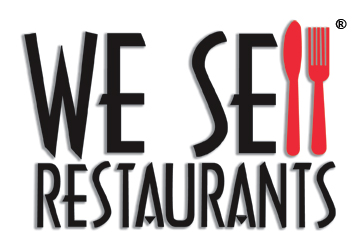
 404-800-6700
404-800-6700

